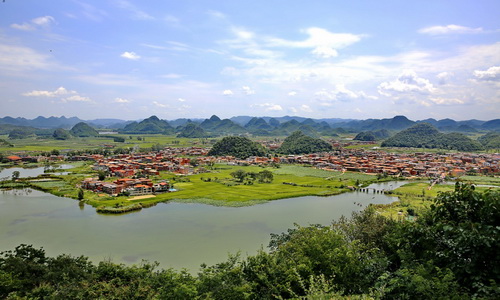Top Places to Visit in Yunnan
Yunnan is China's most mysterious and diverse regions, holding a myriad of natural wonders including incredible rice terraces, permanent snow-capped mountains, awe-inspiring karst pinnacles and caves as well as bewitching highland lakes. Besides, Yunnan is also culturally diverse by housing China's most ethnic minorities such as Miao, Bai, Yi, Naxi, Hani, Tibetan and even Mongols. From their special habitations to brilliant masterpieces in farming and art, you will learn rich history and exotic customs of different tribes. In order to help you better navigate across Yunnan, we've listed the most visited places and regions in Yunnan either for a regular sightseeing tour or for an in-depth discovery of the authentic rural China. Check them to start your Yunnan Tour!
As the capital of Yunnan, Kunming is usually used as a gateway city into Southwest China and a tourist base to explore the rural spots of the Yunnan Province. The city is blessed with warm and mild climate all year round, which is a perfect holiday destination for all types of travelers.
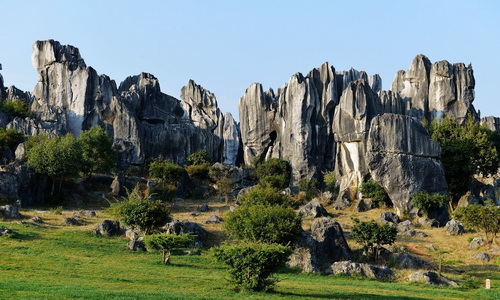
- Stone Forest: About 1.5 hours drive from Kunming, Stone Forest is an awe-inspiring natural stunner originated from millions years ago. It is a scenic area endowed with an array of captivating limestone formations in bizarre shapes of trees, animals and even human figures. The plank walkway provides tourist amazing opportunities to shoot these wonderful pinnacles.
- Green Lake Park: It is the most beloved park in Kunming. Inlaid in a dense urban neighborhood, the lake boasts massive expanse of water and green space, which attracts flocks of local people daily from all over the city. The park also serves as a natural preserve for the migrant red-billed gulls in winter, while visitors could watch and feed them at a close distance.
- Dongchuan Red Land: Located about 200km northeast of Kunming, Dongchuan Red Land is reputed as the God's Magic Palette because of its marvelous and beautiful landscapes made up of terraces in multiple colors including red, orange, green, blue and purple. As the most typical and featured red land in the world, it is always a must-go place for worldwide photography lovers.
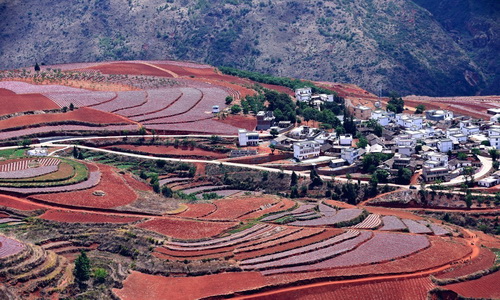
Nestled beneath the snowy peaks, Lijiang is undoubtedly an elegant old town that you would expect for a lazy travel with cobblestone streets, canals, alleyways, and old folk houses. This idyllic place is a World Heritage Town, which is flanked by traditional Naxi-style architectures and traditional courtyard guesthouses that feature carved beams and arched gateways typical of the Naxi culture that thrives here.
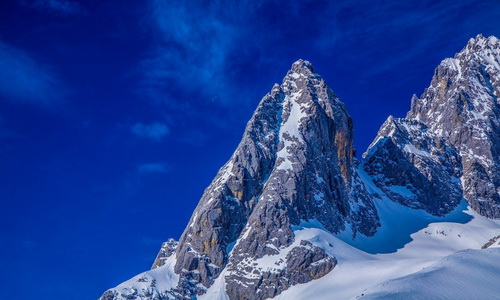
- Jade Dragon Snow Mountain: Spanning over 75km, Jade Dragon Snow Mountain is the most scared mountain in mind of Naxi people. Consisting of 13 snow-covered peaks, the entire mountain ridge boasts the highest one enjoying an elevation of 5,596 meters. So far, the summit of Jade Dragon Mountain has been not touched by human power, but now travelers could take the cable car and oxygen cans to reach up to a rather high altitude where one could see both the glacier peaks and alpine meadows.
- Tiger Leaping Gorge: Tiger Leaping Gorge is one of the steepest canyons in the world, which is carved out by the raging rapids of the Jinsha River, the upper reaches of Yangtze. It can be visited as a great day trip from Lijiang, or one could spend a couple of days following this world's most superb hiking trails between the jagged cliffs and snow massifs.
- Shuhe Old Town: Shuhe is a peaceful old town perched on the ancient tea and horse trading trails, which is also the earliest settlement of ancestors of Naxi group. It is an escape where you could splash half day indulging in the Naxi folk residences, old trail, canal system and even market ambience.
- Baisha Village: Being a part of the world heritage of Ljiang Old Town, Baisha Village used to the capital of the ancient Naxi Kingdom, which is the also the birthplace of the unique Naxi culture. Now visitors could unveil its significant past by a glimpse of the well-treasured mural paintings on the ancient buildings.
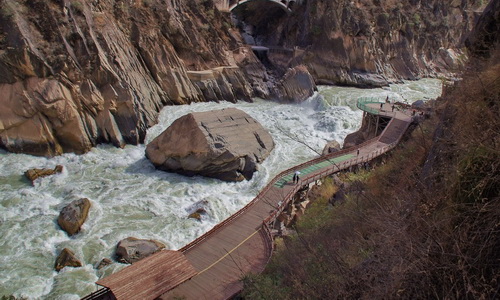
As the capital of ancient Bai minority, Dali presents graceful and scenic views around the small old town. It is very easy for visitors to explore preserved cobbled streets and traditional stone architectures on foot. Usually, a wander down the back alleys would reveals more of the original character, which is simply agreeable for travelers wishing to see a quieter style of Chinese living.
- Erhai Lake: It is an ear-shape freshwater lake ranking the second largest in Dali. The lake view could be best captured by a boating ride through the emerald waters and onshore explorations to the picturesque islands.
- Three Pagodas: Three Pagodas, the landmark of Dali, is seated in Chongsheng Temple, the largest imperial temple of ancient Nanzhao Kingdom. It is an elegant spectacle standing in Dali for thousands of years.
- Xizhou: Xizhou is a core settlement of Bai people, where you could witness the largest and best-preserved Bai-style folk residence with carved beams and fabulous wall paintings. The Yan's Compound is a must-see for a browse.
- Zhoucheng: Famed as the hometown of tie-dyed fabrics, Zhoucheng is one of the largest villages of Bai minority where primitive tie-dying method had been used here for over 1,000 years. You could encounter some age-old folk houses, tie-dying workshops and rural markets.
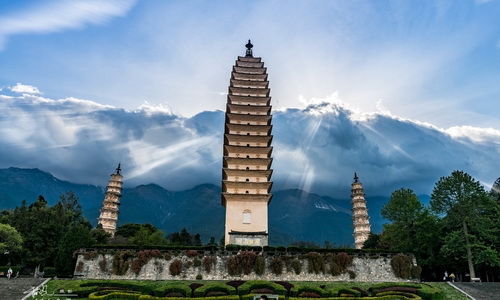
As the only Tibetan Autonomous Prefecture in Yunnan, Diqing boasts countless geographical marvels including surging rivers, holy snow mountains, gem-like alpine lakes, broad pastures and jaw-dropping gorges. Meanwhile, Diqing is a wonderful place you could absorb Tibetan culture without going to Tibet.
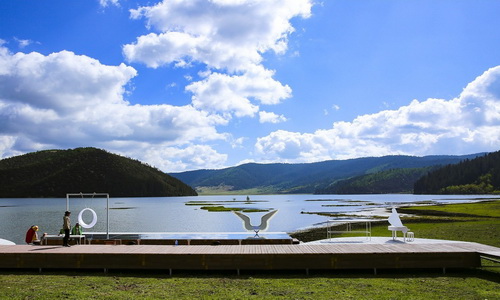
- Pudacuo National Park: The Pudacuo National Park is truly a fairylike wonderland without any pollution. Gifted with thousands of plant and animal species, the park also is also home to mirror-like alpine lakes, lush pastures and marshes as well as virgin forests. The scenery is varied by season, which is suitable for an adventure all year round.
- Meili Snow Mountain: It is one of the most gorgeous snow mountains in this planet because of the unrivaled golden sunrise spectacle. And the main peak of Meili is yet unconquered by human beings. The best time to capture its miracle sunrise is from October to next May.
- Yubeng Village: It is a secluded village on the Tibetan's pilgrimage around Meili Snow Mountain, which is discovered by outsiders not long. Yubeng can only be accessed by horse treks, which makes it an unparalleled hiking routes in China.
- Songzanlin Monastery: Built along the hill slope, Songzanlin Monastery enjoys a magnificent scale and style similar to Potala Palace in Lhasa. Both the outer Tibetan architectures and the abundant religious relics inside are worth a visit by traveling so far.
- Dukezong: Dukezong is a traditional town lined with Tibetan wooden houses, which is the largest Tibetan settlement along the Ancient Tea Horse Road. It also houses the world's biggest prayer wheel that can be only rotated by joint powers of 20 people.
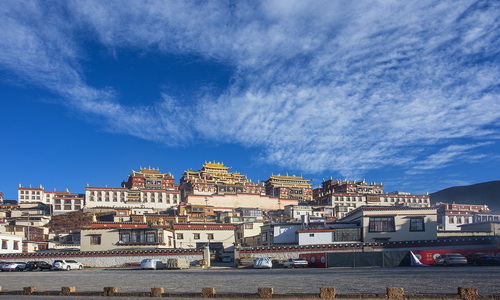
Adjoining Laos and Burma in south, Xishuangbanna is a big basin surrounded by high mountains. It enjoys hot and warm weather all year round, with a yearly average temperature of 22℃. The dry season from November to next May is a travel peak time, and particularly Xishuangbanna sees massive flows of tourists during the big Water-Splashing Festival of Dai Minority in April. The period from June to October is the rainy season, and the weather is hot and damp, but during this time you could nibble on various kinds of tropical fruits.
- Chinese Tropical Botanical Garden: It is the largest and most flora-rich botanical garden China, offering more than ten thousands of tropical plants, including some rare and queer species you've never heard or seen before. Venturing into the park is like a journey to a small rainforest, full of eye-openers and surprises.
- Manting Imperial Garden: As the oldest park in Xishuangbanna, Manting Imperial Garden is a village-based enclosure filled with folk culture plaza, vine plants, orchid nursery, peacock garden and Buddhist cultural sights. At night, there will be folk art performances and bonfire party ongoing in the park, which should not be missed.
- Wild Elephant Valley: Wild Elephant Valley is a nature reserve often visited by Asian wild elephants, while the park also has a great number of buffalos, peacocks and black bears in captivity. Visitors would walk along the elevated corridor to observe them up close. Time-fixed animal shows are available in the park, where you may see the funny elephants dancing, crossing single-plant bridge and kicking the ball with trunks.
- Dai People's Park: Made up of five natural Dai villages, the park is the best place for you to learn about Dai people's traditional customs. Visitors would be welcomed by their passionate dancing and home-made wine. And in the open plaza, tourists could revel in the carnival-like Water-Splashing Festival every day. The park also houses the 400-year-old Manchun Mangu Temple, one of the oldest Buddhist temples in Xishuangbanna where you could hear chanting all day.
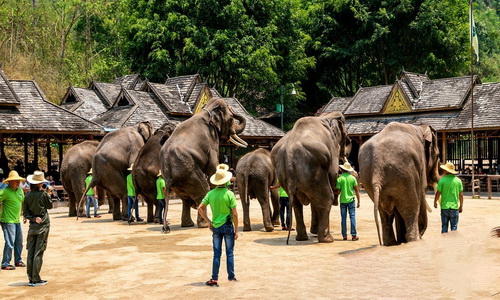
Home to Hani and Yi minorities, Honghe Prefecture is a subtropical region abounding with fabulous agricultural masterpiece and elegant historic sites as well as unique karst landforms. There are a great number of attractions to fulfill the longings of worldwide shutterbugs.
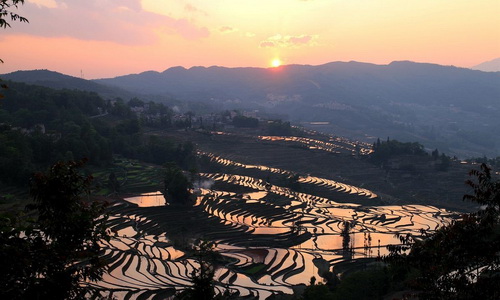
- Yuanyang Rice Terrace: Yuanyang boasts one of the most stunning rice terraces in this planet. With a history of 1,200 years, it is an incredible agriculture art cultivated by generations of Hani people. Sculpted rice fields with glittering water cling to the undulating hillsides, like thousands of mirror pieces reflecting the lush hills, floating clouds and blue sky. You would be definitely awed by the sunrises and sunsets with the fascinating glows over whirling lines of rice paddies and the mushroom-shaped thatched homes.
- Jianshui Old City: Jianshui Old City is a lesser-known gem where you could spend half day for a leisure walk through the cobblestone streets and a glimpse of the gracefully faded frescoes intermingled with fancy gadget shops. For an adventure back into ancient China, you could check out some iconic spots in Jianshui, such as the Chaoyang Gate Tower, Double Dragon Bridge and the exquisite Zhu’s Family Garden.
- Swallow Karst Cave: Reputed as Asia's First Karst Cave, the Swallow Cave is totally different from any other karst landforms you've seen, as the landscape is so unique with caves both under the water and above the ground. You could journey eight kilometers on foot and three kilometers by boating into the carven that is illumined with brightly colorful lights. Meanwhile, the cave is home to millions of swallows, where you could capture their marvelous outing and homing scene respectively at 9am and 5pm between May and July.
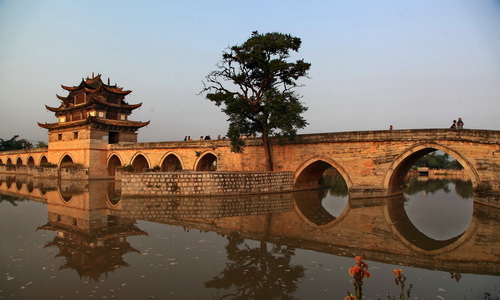
Nestling on the border between Yunnan and Sichuan province, Lugu Lake is located about 4 hours' drive from Lijiang city. It is blessed with spectacularly unspoiled scenery and mythical Mosuo minority culture. Lying at 2,700 meters above sea level, Lugu Lake embraces enthralling mountains from all sides and boasts dreamlike blue water like a huge shining gem inlaid between the sky and earth. There are many favorable trails along the lakeshore for leisurely walks or treks, and optionally one could also board on one dug-out canoe on the tranquil lake surface.
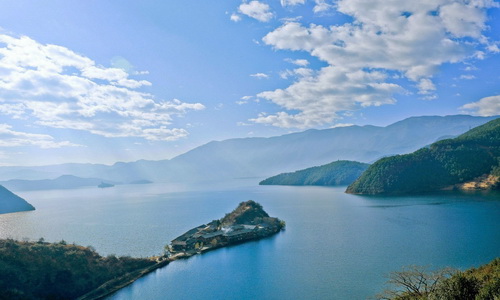
The inhabitants are most Mosuo people who are best known as the last existing matriarchal societies in the world. In their conventional walking-marriage customs, women dominates the whole family clan and the small society, without husbands in the legal sense.
Located in the southeast of Yunnan Province and adjacent to Vietnam, Wenshan Zhuang and Miao Autonomous Prefecture is absolutely the most idyllic and rustic place where you could calm your heart with the pastoral landscapes and local minorities' farming life. Two incredible places would show you how stress is cured in Chinese countryside.
- Puzhehei: Puzhehei lures adventurers for its dramatic Karst landscape and splendid ethnic culture. A network of crisscrossing rivers encircles the lush-wooded peaks, and carves up arrays of rice fields, with some lovely houses dotted in between. The best way to navigate this dreamland is through boating along the waterway, browsing the roaring peaks and enjoy the stunning lotus on the water.
- Bamei Village: Established 600 years ago by Zhuang ethnic minority, Bamei Village is a real hidden Utopia. It is so remote and isolated that it could only be accessed by a boating ride through an underground river in a dark cave. The village still holds simple settlement untouched by modernity! People live in an authentic way, residing in a kind of suspended houses, practicing centuries-old rice farming methods and even driving horse carts. Everything is natural, slow-paced and peaceful like an earthly paradise.
